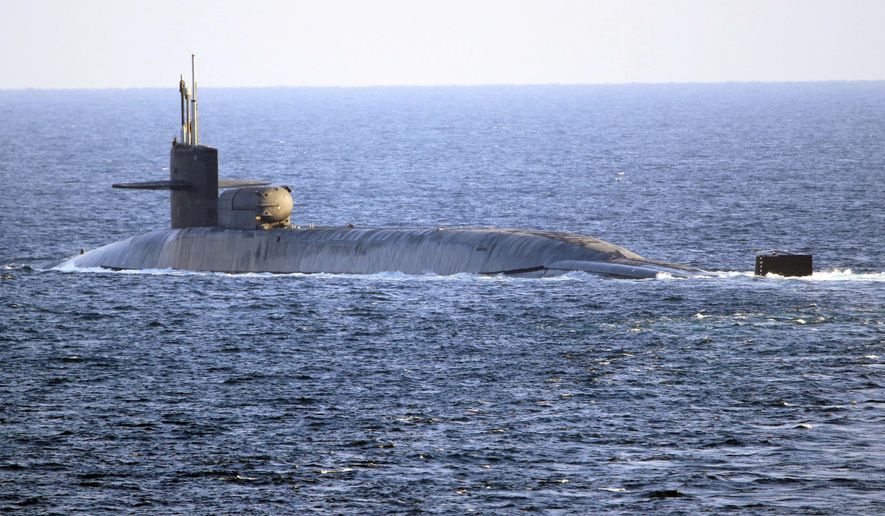A U.S. Coast Guard cutter fired at least 30 warning shots at a group of Iranian fast-attack boats Monday while escorting a U.S. Navy submarine through a tense section of the Strait of Hormuz in the Persian Gulf.
Pentagon officials said the incident marked the second time in the last three weeks that a U.S. warship has fired warning shots at Iranian fast attack boats harassing Navy vessels operating in the heavily trafficked international waters.
Monday developments came as six U.S. Navy and Coast Guard ships were escorting the USS Georgia, a guided missile submarine, through the Strait of Hormuz. The submarine was traveling on the surface of the water, where it had a limited ability to protect itself.
More than a dozen speed boats armed with machine guns from the Iranian Islamic Revolutionary Guard Corps Navy (IRGCN) raced toward the U.S. convoy at a high speed, getting as close as 150 yards, military officials said.
The U.S. vessels attempted to communicate with the Iranians, including through radio transmissions and several blasts from a ship’s horn, but were unsuccessful.
“The U.S. Coast Guard cutter Maui fired approximately 30 warning shots from a 50-caliber machine gun,” said chief Pentagon spokesman John Kirby. “After the second round of warning shots, the 13 fast attack craft from the IRGCN broke contact.”
SEE ALSO: U.S. Navy seizes thousands of Chinese, Russian-made weapons in North Arabian Sea
Officials with U.S. Naval Forces Central Command identified the U.S. ships involved in the operation as the USS Monterey, a guided missile cruiser, Navy patrol ships USS Thunderbolt, USS Hurricane and USS Squall; and two Coast Guard cutters, USCGC Wrangell and the Maui.
The incident was the latest in a series of confrontations with the U.S. involving the IRGCN, the naval arm of the Iranian military answerable to Iran’s supreme leader.
“Harassment by the IRGC Navy is not a new phenomena. It’s something all the commanding officers and crews of our vessels are trained for when serving in the Central Command area of responsibility, particularly in and around the Gulf,” said Mr. Kirby, a retired U.S. Navy admiral who called the incident “unsafe and unprofessional.”
“This is the kind of activity that could lead to somebody getting hurt,” he said.
Monday’s incident came just weeks after three IRGCN fast attack craft had quickly approached the USS Firebolt and the USCGC Baranof on April 26, coming within about 70 yards of both warships that were also operating in international waters, Navy officials said.
That incident also involved warning shots.
“The U.S. crews issued multiple warnings via bridge-to-bridge radio and loud hailer devices but the IRGCN vessels continued their close range maneuvers,” Naval Forces Central Command officials said. “The crew of the Firebolt then fired warning shots and the IRGCN vessels moved away to a safe distance from the U.S. vessels.”
The Strait of Hormuz is a narrow passage between the Persian Gulf and the Gulf of Oman. It is the only route for maritime traffic from the Persian Gulf to the open ocean and is considered both a choke point and strategic location for international trade.
Mr. Kirby said the U.S. warships in the Persian Gulf closely follow all the “rules of the road” while operating in international waters. “They have the right of self-defense and they know how to use that right,” he said.
Tensions between U.S. and Iranian vessels soared in the Persian Gulf in 2016, after Iranian forces briefly seized U.S. Navy riverine command boats and 10 American sailors, who had veered into Iranian waters in the area. Iran released the sailors following a flurry of diplomatic calls between U.S. and Iranian officials at the time.
• Mike Glenn can be reached at mglenn@washingtontimes.com.




Please read our comment policy before commenting.